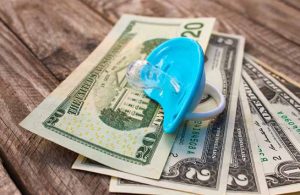Additional 2021 Tax Year Benefits Now Available for Employees with Dependents

The $1.9-trillion stimulus package known as the American Rescue Plan Act (ARPA) includes major changes to the longstanding federal-income-tax child and dependent care credit.
Your employees who have dependent care expenses can get additional tax deductions for the 2021 tax year. The American Rescue Plan Act (ARPA), a $1.9-trillion stimulus package, includes major changes to the longstanding federal-income-tax Child and Dependent Care Credit (CDCC). For the 2021 tax year only, employees who claim dependent care expenses may be eligible for a higher tax credit.
The legislation temporarily increases the dollar limits on eligible expenses for claiming the CDCC from $3,000 to$8,000 for one qualifying individual and from $6,000 to $16,000 for two or more qualifying individuals.
The amount of the credit employees get is a percentage of the amount of work-related expenses they paid to a care provider for the care of a qualifying individual and is based on their adjusted gross income.
Prior to the ARPA the CDCC was nonrefundable, meaning it could only be used to offset an employee’s federal income tax liability. If the employee had no liability, they would not get credit. But for 2021, the credit is refundable for most employees whose primary place of residence has been in the United States for more than half the year.
Eligible Filers and Qualifying Individuals
To qualify for this credit, the taxpayer must have under their care a “qualifying individual or individuals.” Married couples must file a joint Form 1040 for the tax year in question to claim the CDCC. Generally, married couples cannot take this credit if their filing status is “married filing separately.” Qualifying individuals are defined as anyone the employee is taking care of who meets these requirements:
• A dependent qualifying child under age 13
• A spouse who is physically or mentally incapable of self-care who lives with the employee for more than half the year
• An individual who is physically or mentally incapable of self-care and lived with the employee for more than half the year
• Children of divorced or separated parents or parents who are living apart.
To apply for the credit, the person filing must provide the Taxpayer Identification Number (usually the social security number) of each qualifying individual.
Eligible Expenses
An eligible expense is care provided in or outside the household primarily for the wellbeing of a qualifying individual. Typical eligible expenses are payments to a day-care center, nanny or nursery school. Before-school and after-school programs also qualify. Costs that aren’t eligible are overnight camps or private K-12 schools. Anyone claiming the credit must report the name, address, and social security number or employer identification number of the care provider on their tax turn.
To Apply
Employees who received dependent care benefits which are excluded or deducted from their income must subtract the amount of those benefits from the dollar limit that applies to them.
Employees who qualify for the credit must complete Form 2441, Child and Dependent Care Expenses and attach it to Form 1040, U.S Individual Income Tax Return; Form 1040-SR, U.S. Tax Return for Seniors; or Form 1040-NR, U.S. Nonresident Alien Income Tax Return. If they received dependent care benefits from you — their employer (an amount shown on their Form W-2 Wage and Tax Statement) — they must complete Part III of Form 2441.
If your employees need more information about qualifying for this credit, they should visit www.irs.gov/publications/p503.